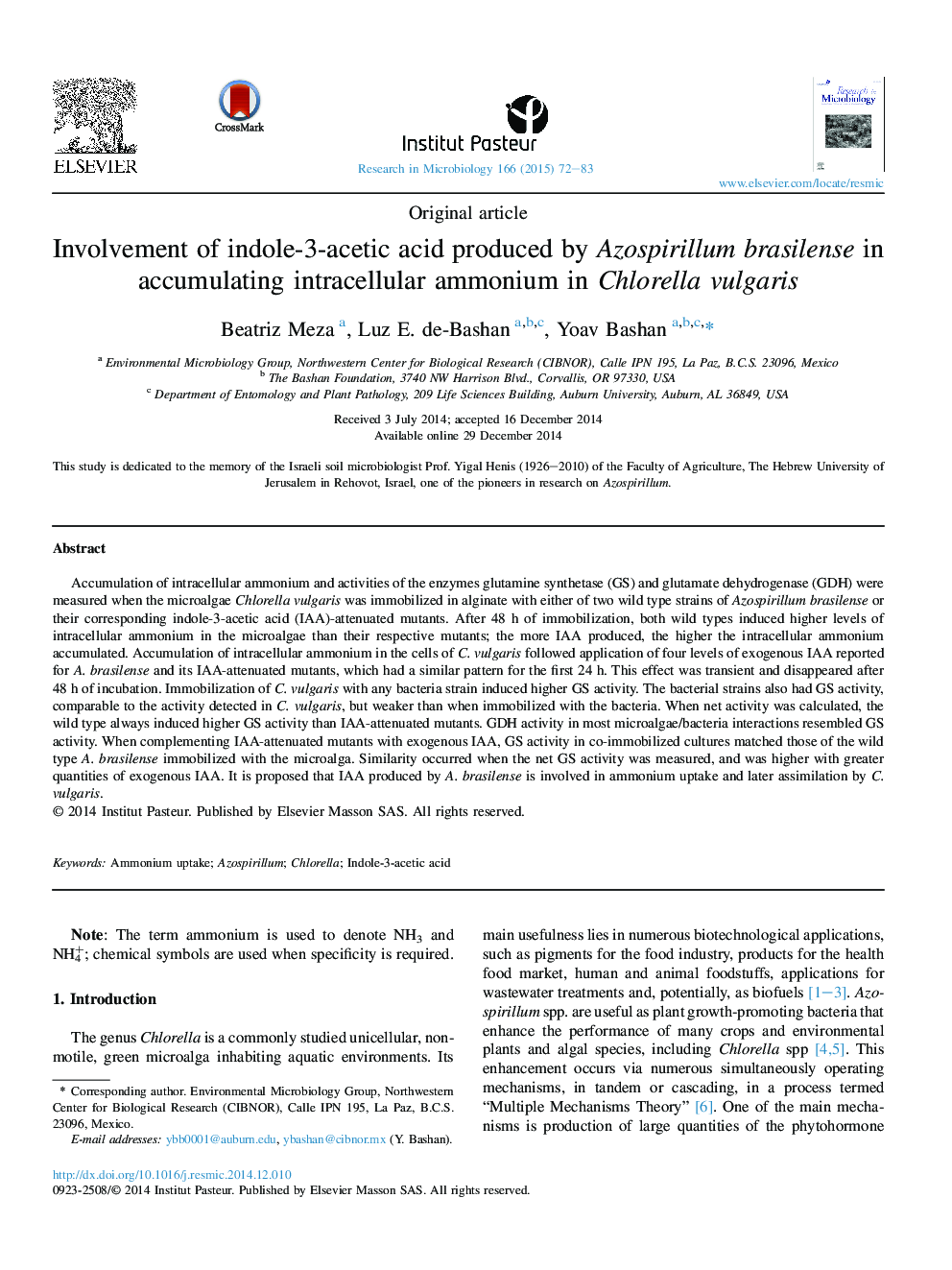| Article ID | Journal | Published Year | Pages | File Type |
|---|---|---|---|---|
| 4358436 | Research in Microbiology | 2015 | 12 Pages |
Accumulation of intracellular ammonium and activities of the enzymes glutamine synthetase (GS) and glutamate dehydrogenase (GDH) were measured when the microalgae Chlorella vulgaris was immobilized in alginate with either of two wild type strains of Azospirillum brasilense or their corresponding indole-3-acetic acid (IAA)-attenuated mutants. After 48 h of immobilization, both wild types induced higher levels of intracellular ammonium in the microalgae than their respective mutants; the more IAA produced, the higher the intracellular ammonium accumulated. Accumulation of intracellular ammonium in the cells of C. vulgaris followed application of four levels of exogenous IAA reported for A. brasilense and its IAA-attenuated mutants, which had a similar pattern for the first 24 h. This effect was transient and disappeared after 48 h of incubation. Immobilization of C. vulgaris with any bacteria strain induced higher GS activity. The bacterial strains also had GS activity, comparable to the activity detected in C. vulgaris, but weaker than when immobilized with the bacteria. When net activity was calculated, the wild type always induced higher GS activity than IAA-attenuated mutants. GDH activity in most microalgae/bacteria interactions resembled GS activity. When complementing IAA-attenuated mutants with exogenous IAA, GS activity in co-immobilized cultures matched those of the wild type A. brasilense immobilized with the microalga. Similarity occurred when the net GS activity was measured, and was higher with greater quantities of exogenous IAA. It is proposed that IAA produced by A. brasilense is involved in ammonium uptake and later assimilation by C. vulgaris.
